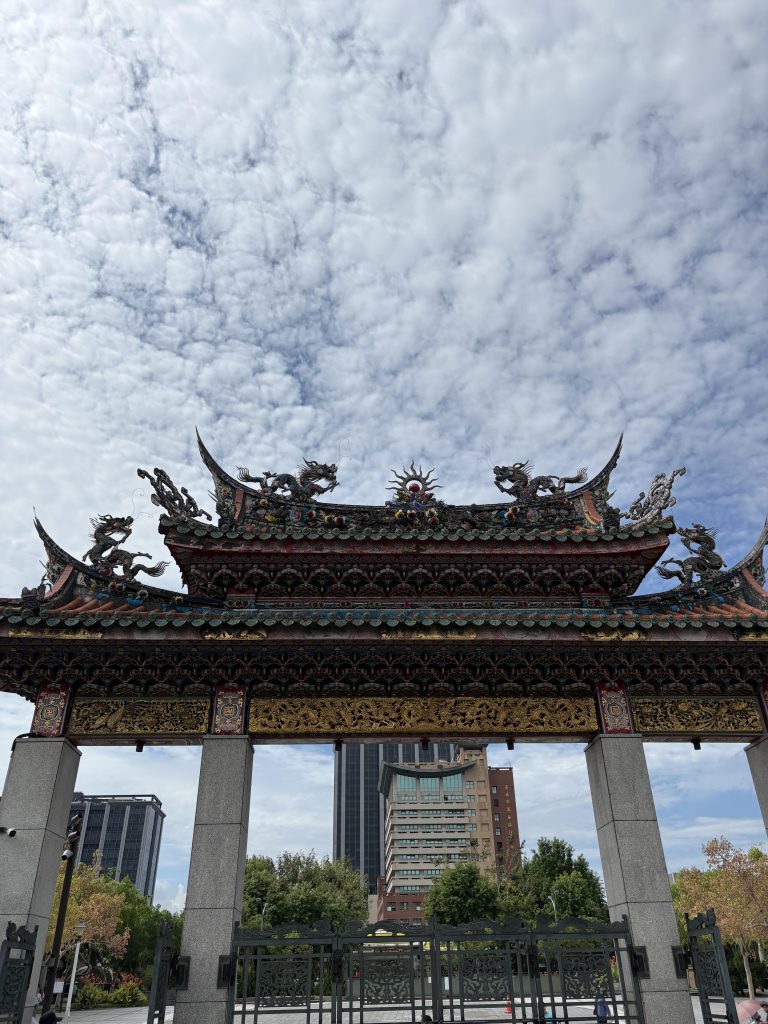Today we visited two temples. The first, Lungshan temple, is a Buddhist and Taoist temple located in Taipei. I learned many traditional aspects of Buddhist and Taoist worship, including that in temples, you always enter at the side with the dragon, and leave at the side with the tiger. People who visit the temple often bring offerings, including flowers, incense, and vegetarian foods. This is because non-vegetarian foods are indicative of a blood sacrifice, something unpleasant to both the offeror and the deceased. I also noticed how the offerings at Lungshan were always placed on a red plate before being placed on the table, despite some of the offerings already being in packaging.
It was also interesting to observe the fusion of business and culture. Lungshan, for example, is in the city center, which is prime real estate for business. It is clear how the temples were built prior to the development of the rest of the city, as neighboring buildings with drastically different construction were built directly against the temple. You can also tell how Taipei was built around the temples, which makes sense because of their rich history at the forefront of culture and everyday life. This is evident by the fact that the entrance to the subway is directly across from the entrance to the temple, allowing for easy access and serving as a hub for both locals and visitors. Professor Young also pointed out how many older individuals spend their time leisurely in between the subway station and the temple, again highlighting the importance of the area.
The second temple we visited was Xingtian, also located in Taipei. Xingtain is much more modern, built in the mid 20th century, with Southern influence in the construction. There was significantly less gold and intricate architecture than in Lungshan. Xingtain also had a health center and areas for education.
A commonality between both temples was the strong sense of community. Religions were established to bring people together with common beliefs, and these temples serve as places for people to come together and engage in traditions, foster relationships, and support one another through their faith. In Taiwan, the communities people build seem much more heavily integrated with religion than in the U.S. What is similar to the U.S. is that the demographic of individuals at these temples are older, which seems to follow the global trend of less people affiliating with a religious group.
